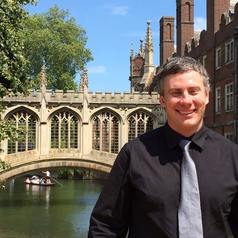Pope Francis will embrace active nonviolence when he delivers his World Day for Peace address on January 1 2017. Invoking the ideology of Martin Luther King and Mohandas Gandhi, the pope will urge people of all faiths to break the cycle of violence and, noting that after enduring two world wars in the 20th century, “today, sadly, we find ourselves engaged in a horrifying world war fought piecemeal”. He will call for everyone to become an “artisan of peace”.
Francis’ statement will be the 50th World Day for Peace message. In 1967, Pope Paul VI, better known for his reiteration of traditional church teaching on birth control, instituted the celebration and, each year, popes have issued a message in which they have often introduced new ideas and concepts into the social teaching of the Catholic church. These have included ecology, human rights – and perhaps the most famous mantra in Catholic social teaching – Paul VI’s message: “If you want peace, work for justice”.
This year’s message exemplifies this trend and brings into the Catholic zeitgeist a word which has been the currency of most peace activists since Gandhi came to public prominence after World War I. This word is nonviolence, an idea and ideal that is frequently misunderstood. Francis’s message explores this word in some of its fullest meanings and, in doing so, affirms the importance of a particular style of the politics of peace. This is significant because it indicates a movement in the Catholic church’s focus on war and peace from the idea of a “just war” towards an embrace of active nonviolence.
The cost of violence
For many, a common misunderstanding is that nonviolence is characterised by extreme passivity where Christians are expected to allow others to abuse them in anticipation of some future heavenly reward. Such a stance is justified by the often misunderstood teaching of Jesus “to turn the other cheek”. This gospel passage is cited in this year’s message but is situated in a very different way.
Mohandas Gandhi, taken in late 1930s.
Francis uses the examples of the superstars of nonviolence, Martin Luther King Jr, Gandhi, the Muslim nonviolent revolutionary Khan Abdul Ghaffar Khan and the 2011 Nobel Peace Prize-winner, Leymah Gbowee to disabuse us of this notion.
Here, Francis shows us how focused he is upon interfaith relations – and, through the use of these examples, Francis teaches that nonviolence is a radical practice that actively seeks to bring about the conditions of positive peace, that is a peace consisting of much more than the mere absence of war. These people did not add to the cycle of violence but instead actively wanted to break it. These are the people that Francis wants us to learn from and emulate. He wants nonviolence in this mode to permeate political life in all of its forms.
Politics for peace
Francis emphasises that “violence is not the cure for our broken world” – he says that the real cost of violence is “forced migration, enormous suffering and, too frequently, death”. Because everything is interconnected, achieving peace is the responsibility of all – from political leaders to ordinary people taking little simple steps. For Francis, every such response is significant – and this is the most empowering point that he makes: we all control the fate of the world through our actions.
Superstar of nonviolence: Martin Luther King. Nobel Prize
The empowering style of this politics for peace is not just explored on the level of principle. Specific programming for nonviolent action is recommended throughout the message. The most important of these is respect for integral human dignity – that people are relational beings who need to live in communities – a point which comes through most clearly in his advocacy of dialogue. In Francis’ view, violence permeates every aspect of society from the geopolitical to the familial. His assertion that we are in a “piecemeal” world war challenges the dangerous assumption that global threats to peace are a thing of the past.
In the West, it is too easy to think of violence as something that happens elsewhere, something we hear about in the media that can be switched off at will. But Francis strives to be a pope for the whole world and is calling people to realise that, because of the reality of interconnectivity, we are all responsible. None of us lives free from the tentacles of violence.
For Francis, this reach of violence corresponds to a wide agenda for nonviolent action. He calls on us to move beyond the tactical – we have to address issues such as nuclear proliferation, poverty, the refugee crisis and violence against women. And we have to do this in a principled way. We cannot accept the premise that force is somehow free from the constraints of morality. In contrast he asserts that force, like all human actions, ought to be mediated by morality.
Everyone’s a winner
According to Francis, this teaching is on Jesus’s Beatitudes that human relationships should be mediated by love and justice. In this light, nonviolence becomes an act of love working for peace, justice and care for creation and for all people so that the discarding of no one can be justified.
This is a vision based upon concern for migrants, the sick, the excluded and marginalised, the imprisoned and the unemployed as well as victims of what would traditionally be considered violence. In such a manner, Francis fills in the content of positive peace. In turn, this helps situate his goal of building nonviolent communities, inhabited by nonviolent people who care for our common home.
Francis consulted widely and drew on diverse sources for crafting this year’s message. There are informal signals that an encyclical (a longer and more authoritative form of papal teaching) on nonviolence will follow. In the present message there is something designed to appeal to most people – from greens to conservatives to liberals – showing how Francis is practising what he is preaching and seeking to inspire a pilgrim church and others sympathetic to his message to work to heal a broken world.
Here, active nonviolence could heal the fractures within Catholicism and other divided communities as people respond to Francis’s call. Through such tangible possibilities, his previously expressed sentiment reiterated in the conclusion of this message, that everyone can be artisans of peace emerges in a more cogent and fuller light.
 The authors do not work for, consult, own shares in or receive funding from any company or organization that would benefit from this article, and have disclosed no relevant affiliations beyond the academic appointment above.
The authors do not work for, consult, own shares in or receive funding from any company or organization that would benefit from this article, and have disclosed no relevant affiliations beyond the academic appointment above.
This article was originally published on The Conversation. Read the original article.



 5 years since COVID was declared a pandemic, we’re still poorly prepared for the next one
5 years since COVID was declared a pandemic, we’re still poorly prepared for the next one  Gold Gains Ground as Weak CPI Fuels Rate Pause Bets
Gold Gains Ground as Weak CPI Fuels Rate Pause Bets  Ethereum Under Pressure: ETF Outflows, Upgrade Delays, and Key Technical Levels
Ethereum Under Pressure: ETF Outflows, Upgrade Delays, and Key Technical Levels  What can you do if your child is being bullied?
What can you do if your child is being bullied?  How the pandemic’s narratives are still unfolding, five years on
How the pandemic’s narratives are still unfolding, five years on  What does Egypt’s plan to rebuild Gaza involve and what challenges does it face?
What does Egypt’s plan to rebuild Gaza involve and what challenges does it face?  Replacing stamp duty with a land tax could save home buyers big money. Here’s how
Replacing stamp duty with a land tax could save home buyers big money. Here’s how  Is Trump’s assault on Canada bringing Québec and the rest of the country closer together?
Is Trump’s assault on Canada bringing Québec and the rest of the country closer together?  ‘Pandemic babies’ turn 5: Here’s what research tells us about their development and remarkable resilience
‘Pandemic babies’ turn 5: Here’s what research tells us about their development and remarkable resilience  Aave's DeFi Revolution: Ecosystem Expansion, Technical Analysis, and Investment Opportunities
Aave's DeFi Revolution: Ecosystem Expansion, Technical Analysis, and Investment Opportunities  Quantum technologies are changing our world – what does NZ need to be part of the next revolution?
Quantum technologies are changing our world – what does NZ need to be part of the next revolution?  Gold Surges Amid Safe-Haven Demand: A Technical Outlook
Gold Surges Amid Safe-Haven Demand: A Technical Outlook 
































